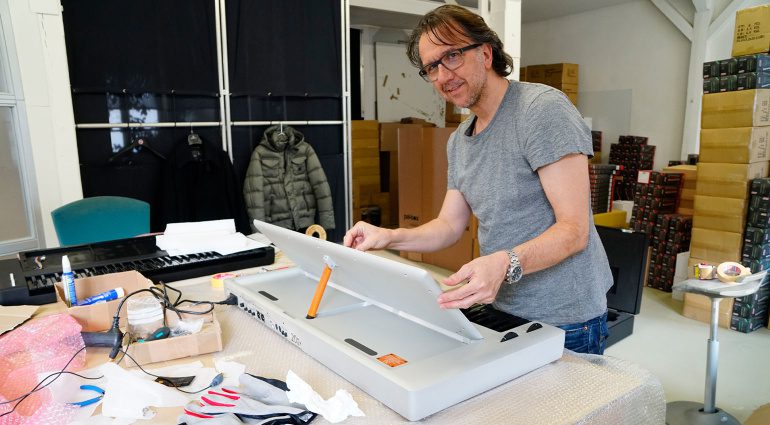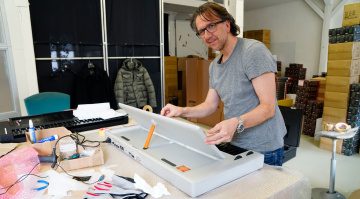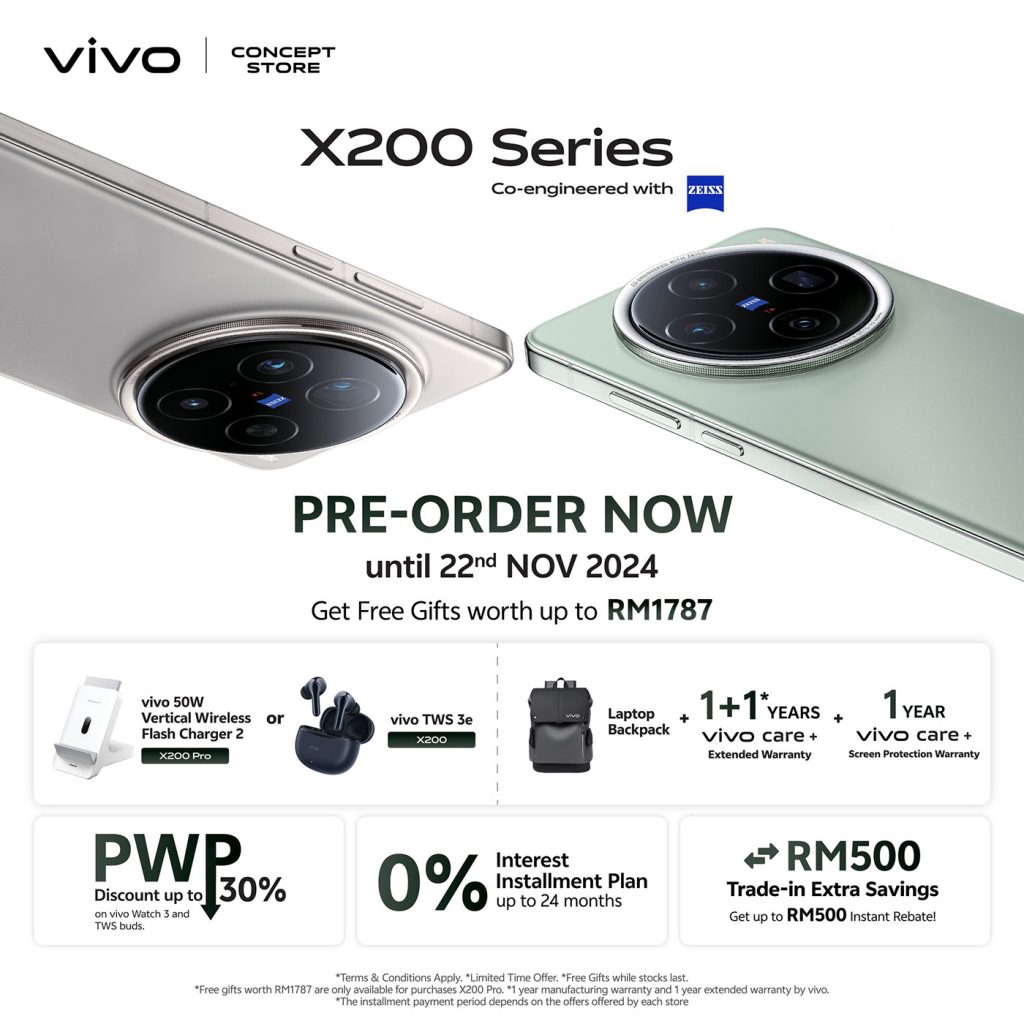Synthesizer industrial design genius Axel Hartmann talks about the design process, finding inspiration and who he wishes he could design for. Hint: they’re Scandinavian…
Axel Hartmann Interview
Let’s try an exercise. Close your eyes and think of your favorite synthesizer released in the last 30 years. Now check this list of instruments that Axel Hartmann designed. There’s a very good chance that Axel worked on the industrial design – the look and feel – of your number one instrument.
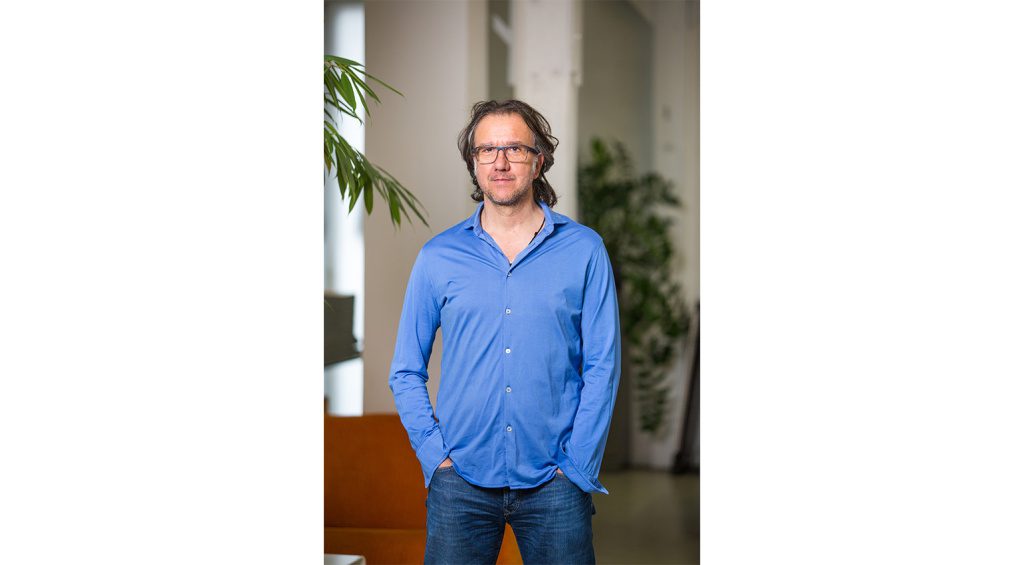
It’s almost shocking how many incredible instruments Axel Hartmann has had a hand in. From his start at Waldorf on instruments like the Wave and Q, to the Alesis Andromeda and Roland Fantom (2019), to a strong working relationship with Arturia that has yielded the Brute line, MiniFreak and AstroLab, and on to more esoteric instruments like the Stylophone Theremin, his CV reads like the ultimate GAS wishlist. And then of course there’s his own synthesizer, the Hartmann Neuron, which is an inspiring and ground-breaking instrument in its own right.
We recently caught up with Axel to talk about the industrial design of musical instruments and plugins (yes, he does those too).
Axel Hartmann: Getting Involved
Gearnews: At what point in the development of a synth do you become involved?
Axel Hartmann: Ideally, we are involved in a project at a point where the basic specifications of a future product have already been defined. This gives us the opportunity to perfectly adapt the design to the product in the first few steps. Of course, this is not always the case – we have also joined projects at a later stage, or we were allowed to help work out the specifications, which means being involved from the conceptual stage together with the vendor’s product team.
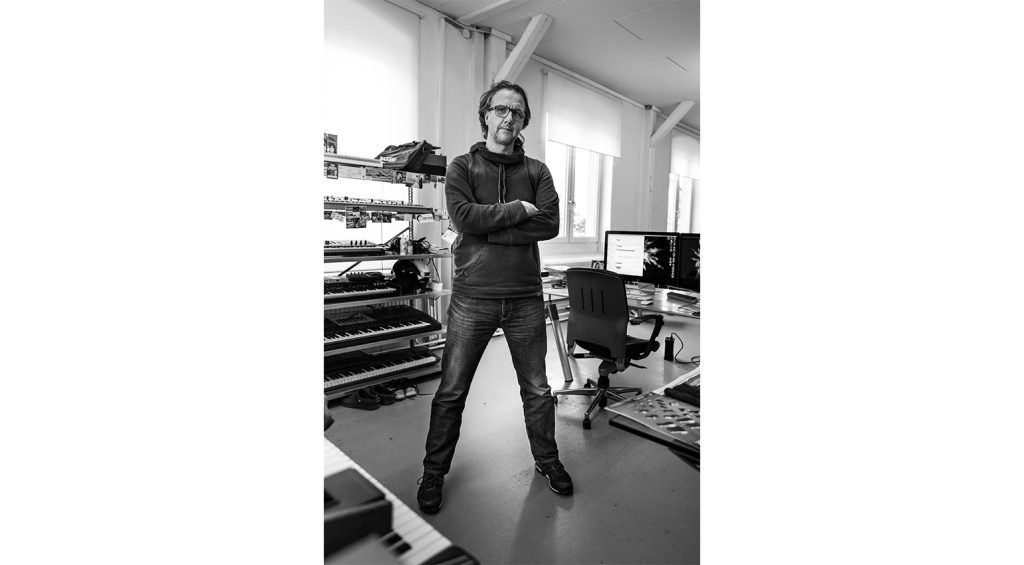
GN: What is your favorite synth design that you’ve done?
AH: There are now quite a few favorite projects and it would be unfair to pick one out, as they all have their own very special and, for me as an industrial designer and musician, extremely interesting structure of requirements. However, it was certainly a very special experience and an honor for me to work on the last synthesizer that Bob Moog himself developed shortly before his sad and much too early death in 2005. It was the Little Phatty, which I think has transported the legacy of the Moog brand into the modern age in an honest and good way. And this is based on the iconic appearance of the instrument to a fundamental extent.
GN: What’s a synth that you didn’t design but wish you had?
AH: I would love to design a synthesizer for Hans Nordelius/Nord, because I really appreciate their products and also use them as a keyboardist myself. I also think that with our skills we could actually make a good contribution to the aesthetics of Clavia products. However, I have already made many attempts, but Hans remains firm – of course in a very friendly way – when he makes it clear to me that he is not interested in a cooperation because he would then have to sell (and laboriously build) many more instruments (laughs).
From an aesthetic point of view, I admire – as perhaps many of my colleagues do – the products from Teenage Engineering, which are excellent in every last fiber of their industrial design. I am always fascinated when there is a new product from their aegis to discover. The depth of detail in all relevant areas of product development is unparalleled – no, more than that – it’s almost outrageous! In any case, it’s big class!
Axel Hartmann: Changing Synth Design
GN: How has synth design changed over the years – or has it?
AH: What has changed in my personal perception over the years is the fact that nowadays even smaller manufacturers can succeed in designing and marketing great products. A technological socialization can be recognized; even so-called one-man shows can develop extremely interesting electronic music machines and then bring them to market through new channels. The traditional marketing structures in the synthesizer industry have changed rapidly in recent decades since the advent of the internet. Added to this are the possibilities of public funding via platforms such as Kickstarter, etc.
And so it happens that even smaller companies suddenly recognize their chance to develop moving products – and sometimes they commission us for the industrial design. There are considerable examples (UDO, Supercritical, Schmidt…). And modern production techniques lead to the fact that products can also come along professionally and in well-designed smaller editions. It is, in my humble opinion, a fantastic time for creative developers!
Axel Hartmann: Plugins Vs Hardware
GN: You also do plugin design, such as the Waldorf Nave and Antares Autotune. How is designing for a plugin different than hardware?
AH: Initially, a plugin appears as a two-dimensional graphic on a screen. The plugin scene has developed in parallel with the possibilities of computer-aided music production to such an extent that it is now the tool of choice, especially in the pro sector. Today, software instruments are much more than the pure transformation of classic instruments or effect devices into the world of DAWs. If you disregard “pure hardware replicas,” plugins can be extremely creative instruments whose sound and editing possibilities go far beyond what hardware can ever offer. And this is of course also expressed in the user interface.
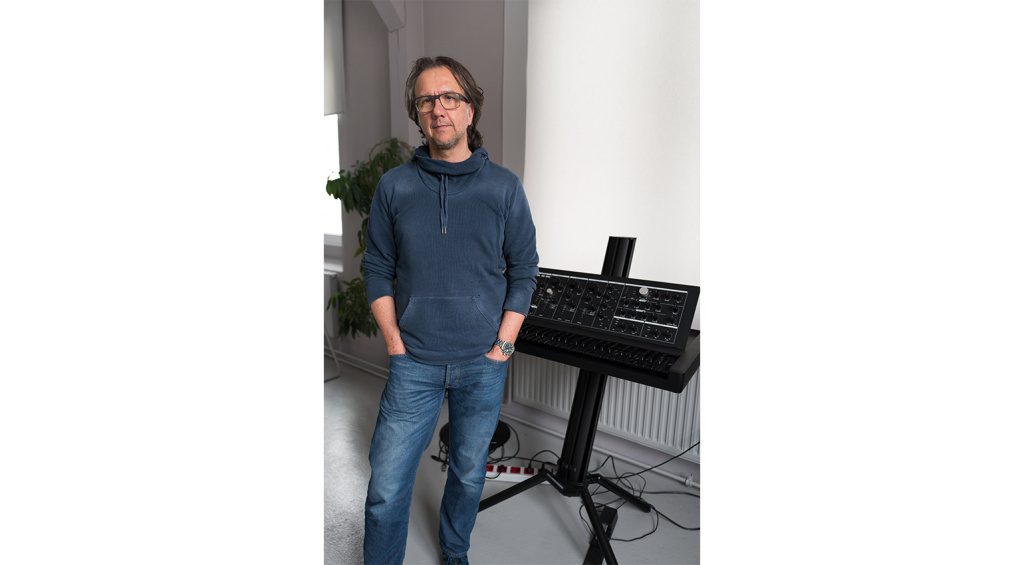
When I design a hardware instrument, it’s mainly about things like ergonomics, manufacturability, production costs, etc., which per se already dictate what we can do. With a software instrument, it’s a completely different story. It’s “only” (hopefully) attractive and inspiring images that we come up with and that ideally support the user ergonomically when working with the program, but above all in a joyful and inspiring way.
Of course, this should also take place on the control panel of a real hardware synthesizer. But there, the control panel would only be one dimension, an important but small part of the whole instrument. Then there are the factors mentioned above that specify a hardware instrument as a self-contained entity. I enjoy designing both. But deep down in my heart, I am of course an industrial designer – and I love the three dimensions of the “real world.”
Axel Hartmann: Unusual Design
GN: Some recent plugins have fairly unusual designs, like the ones from Aberrant DSP or Mixing Night’s LOLCOMP. Do you think hardware can ever be this unusual in terms of design?
AH: Wonderful examples! To be honest, I just had to Google both of them (laughs). When you move around at Superbooth, you can discover a number of super interesting, funny, stunning hardware concepts that have their own unique charm and sometimes have fascinating functionalities. The counter-question would be: Do you think that software will ever be as nice to touch … as hardware? Will I ever be able to touch and caress the radiant smiley face from Mixing Night’s LOLCOMP as such?
I believe that both worlds have their right to exist and my humble opinion is that there is hardware that is just as unusual and joyful. Examples? Playtime Engineering’s BlipBlox or the Gamechanger instruments, Soma’s product line…
Axel Hartmann: Finding Inspiration
GN: What inspires you outside of musical instruments?
AH: I’ve been a big car fan all my life and I follow the scene quite closely. You can see future trends in the automotive industry very well because that’s where the money is. And then you also have some of the best designers in this field because you still need a wide range of skills in automotive design, especially when it comes to the overall picture. But I also like to go to the MediaMarkt stores from time to time and see what’s new in electronics – from all kinds of areas. Everything that has a power connection has always fascinated me.
GN: What’s something that you want to do but haven’t had the opportunity yet?
AH: I would love to design a really high-quality hi-fi device, a record player or even a whole series of devices. Or a compact system like the ones that were popular in the seventies.
But to be honest, I’m overjoyed that I’ve had the chance to design so many synthesizers and electronic musical instruments in my career so far. The fact that so many manufacturers have put their trust in me makes me almost perfectly happy!

